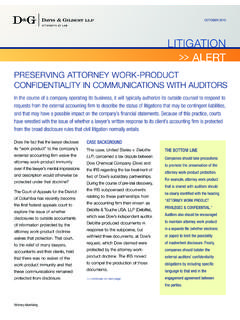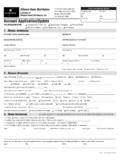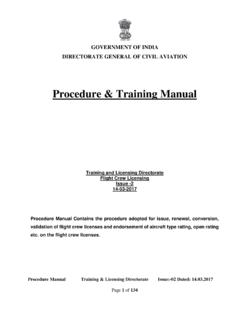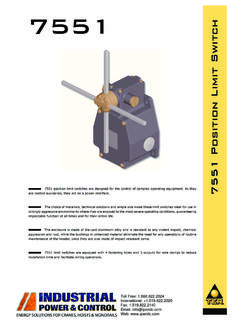Transcription of The Perils of PERA: Putting 401(k) PERAs and ERISA Budget ...
1 Mark E. Bokert is chair of the Benefits & Compensation Practice Group of Davis & Gilbert LLP. His practice encompasses nearly all aspects of execu-tive compensation and employee benefits, including matters related to equity plans, deferred compensation plans, phantom equity plans, quali-fied retirement plans, and welfare plans. Mr. Bokert may be contacted at Alan Hahn is a partner in the Benefits & Compensation Practice Group of Davis & Gilbert LLP. His practice is devoted to advising clients of all sizes, including in the design and implementation of a wide variety of creative, unique, and tax-effective employee benefit plans and programs. Mr. Hahn may be contacted at The authors wish to thank Davis & Gilbert LLP associate Elizabeth Flanders for her assis-tance in the preparation of this Perils of PERA: Putting 401(k) PERAs and ERISA Budget Accounts under the Fiduciary MicroscopeMark E. Bokert and Alan HahnThis column provides a background of the mechanics of revenue sharing (payments that investment plan options make to third party administrators (TPAs) to compen-sate TPAs for their recordkeeping services), then discusses the recent Department of Labor guidance, and lastly discusses plan fiduciary considerations in setting up and monitoring such excess (k)1 plan sponsors often delegate oversight of their defined con-tribution plans to a select group of individuals, very often a group of employees who form a plan committee to oversee the plan and ensure that the plan complies with the Employee Retirement Income Security Act of 1974, as amended ( ERISA ) and the Internal Revenue Code of 1986, as amended.
2 The plan fiduciaries are typically tasked with a number of important responsibilities, including the job of provid-ing oversight of plan administrative and investment Foremost among these oversight responsibilities is the obligation to make sure that third party administrators (TPAs) that provide recordkeeping and other administrative services to the plan like the well-known TPAs, which include Vanguard, Fidelity, ING, MassMutual, Schwab, and Principal, to name a few receive no more than reasonable fees for their services. As is well known among plan fiduciaries who take their roles seriously, when a 401(k) plan invests in an investment fund, the investment man-ager of the fund often shares a portion of the revenue it receives from the 401(k) plan with the 401(k) plan s TPA as a fee for recordkeeping LAW JOURNALE mployee RelationsElectronically reprinted from Winter 2014 Employee Benefitsservices performed by the TPA.
3 The portion of the revenue that is shared with the TPA ( , the revenue sharing) must be taken into account when the plan fiduciaries determine whether the TPA s compensation is reasonable. Sometimes, particularly in an appreciating market envi-ronment, the revenue shared with the TPA results in the TPA receiving unreasonable ( , excess) fees. For several reasons, including the significant increase in 401(k) fee litigation directly challenging the reasonableness of fees received by a TPA, many plan fiduciaries are asking their TPAs to take steps to control the amount of revenue they are receiving. One such practice involves the establishment of an account that can made be available to the plan sponsor to reimburse the plan sponsor for certain plan expenses as an offset to the excess revenue collected by the TPA. Despite the seem-ing proliferation of this practice in the marketplace over the past 10 years, the fact remains that very little guidance has been offered by the regulatory authorities in regard to this practice.
4 As a result, a cau-tious plan fiduciary would be wise to tread carefully in this area. To address some of the concerns of plan fiduciaries, the Department of Labor (DOL) recently released an Advisory Opinion regarding this prac-tice. Because of the importance of this DOL guidance and the ongoing appreciation of the equity markets causing even more revenue to flow to TPAs, this column discusses the good, the bad, and the ugly of using excess accounts (sometimes referred to as an ERISA Excess or ERISA Budget account or Plan Expense Reimbursement account (PERA)). This column first provides a background of the mechanics of revenue sharing, then discusses the recent DOL guidance, and lastly discusses plan fiduciary considerations in setting up and monitoring such excess Just What Is Revenue Sharing?Revenue sharing is a term used to generally describe payments that investment plan options (typically mutual funds) make to TPAs to com-pensate TPAs for their recordkeeping services.
5 Participants in retirement plans typically invest their account balances in investments such as mutual funds, where the funds charge the participants a fee for the costs of maintaining the funds. This fee (often known as a management fee) is assessed as a percentage of the participants assets that are invested in the specific fund. The TPA then receives a portion of the manage-ment fees and such payments are generally called revenue sharing fees. These payments include Securities and Exchange Commission Rule 12b-1 fees and other shareholder and administrative service fees. Compensating TPAs based on a percentage of plan assets is some-thing of an awkward arrangement, borne of marketplace developments that have generally taken place over the past two decades whereby recordkeeping services have been bundled (or combined) with other Employee Benefitsservices, like investment management services.
6 Despite the bundling of the fees, TPAs in actuality only need a fixed amount to provide their ser-vices ( , an estimated flat dollar amount or a per participant amount, taking into account various factors of recordkeeping the plan, including total assets, average account balance, and other administrative sup-port that may relate to how decentralized the plan sponsor is in relation to the plan). Obtaining this amount the fixed amount the TPA needs to record-keep the plan at an acceptable level is oftentimes not readily available to the typical plan sponsor. And, making the job even more dif-ficult for the plan fiduciary, this amount is even harder to discern when the TPA is also providing investment management services, whereby the split between the gross investment management expense and the recordkeeping revenue sharing component is perhaps somewhat arbi-trarily set by the two-hatted TPA/investment manager.
7 In any case, under a revenue sharing structure where the TPA is paid a percentage of plan assets, the amount of fees the TPA receives is dependent on the asset level in the plan. In some cases, therefore, par-ticularly in a rising market environment, the TPA might receive revenue sharing payments in a given time period in excess of the actual cost to the TPA for servicing the plan. In such a case, the difference is additional profit to the TPA and is generally known as excess revenue sharing. Impact of ERISA Section 408(b)(2) Fee Disclosure; Alternative ResponsesFor several years, culminating with the Department of Labor finalizing the ERISA Section 408(b)(2) fee disclosure regulations in 2012, many plan fiduciaries began to question the revenue sharing payments that their TPAs were receiving in connection with providing recordkeeping and administrative services to their plans. Plan fiduciaries began to look for ways to recoup or reduce some of the excess fees TPAs were retain-ing.
8 When looking to recoup or reduce excess revenue sharing, plan fiduciaries have a number of options to choose from to address this concern. For example, one alternative for reducing revenue sharing is for the plan sponsor to move its 401(k) plan assets from retail investment funds or other funds that may have relatively high investment manage-ment fees to funds with lower investment management fees (such as institutional investment funds). A variation on this theme is fee leveling where much, if not all, of the plan investments contribute an identical amount towards the recordkeeping fee. Another option might be to negotiate a fixed administrative fee and move away from revenue shar-ing altogether. In regard to this latter alternative, plan fiduciaries must then consider whether making a low-balance participant pay the same as a high-balance participant is unfair. If so, yet another version of this alternative is to charge participants in two parts: a percentage of assets up to a certain amount, and then a flat BenefitsReimbursement account SolutionAmong these alternatives is the reimbursement account .
9 This alterna-tive is a contractual agreement between the plan sponsor and the TPA in which the TPA agrees to set aside a percentage of the excess revenue sharing amounts it receives for use by the plan sponsor. Deposits into such accounts can be made monthly or quarterly or at another appro-priate interval. The plan sponsor can then use the amounts to pay for additional reasonable and necessary plan expenses (for example, costs for participant communication and education, certain plan amendments, nondiscrimination testing, determination letter requests, plan accounting audits, and Form 5500 preparation). Importantly, if a plan sponsor elects to set up a revenue sharing arrangement, the arrangement is typically set up in one of two ways. One version is generally known as an ERISA Budget account (also sometimes referred to as an ERISA Expense account or ERISA Excess account ) and an alternative version is generally known as a Plan Expense Reimbursement account (also referred to as a Pension Expense Reimbursement account or PERA).
10 While not all TPAs use the same vernacular, and the regula-tions actually do not use either appellation, we would generally draw the distinction as follows: In the case of an ERISA Budget account , the TPA deposits excess revenue sharing amounts into an allocated account within the 401(k) plan s trust, which is then used by the plan sponsor to pay reasonable and necessary plan expenses. Any amounts left over at the end of the year, or at some point soon thereafter, are generally allocated among participant Alternatively, with a PERA, the TPA retains the revenue sharing payments in its general assets and the amounts in question are credited to a hypothetical bookkeeping account , which is maintained by the TPA. Similar to an ERISA Budget account , PERA amounts can be used to offset the expense of plan administration and the employer can direct the TPA to use the amounts to pay reason-able and necessary plan expenses.













